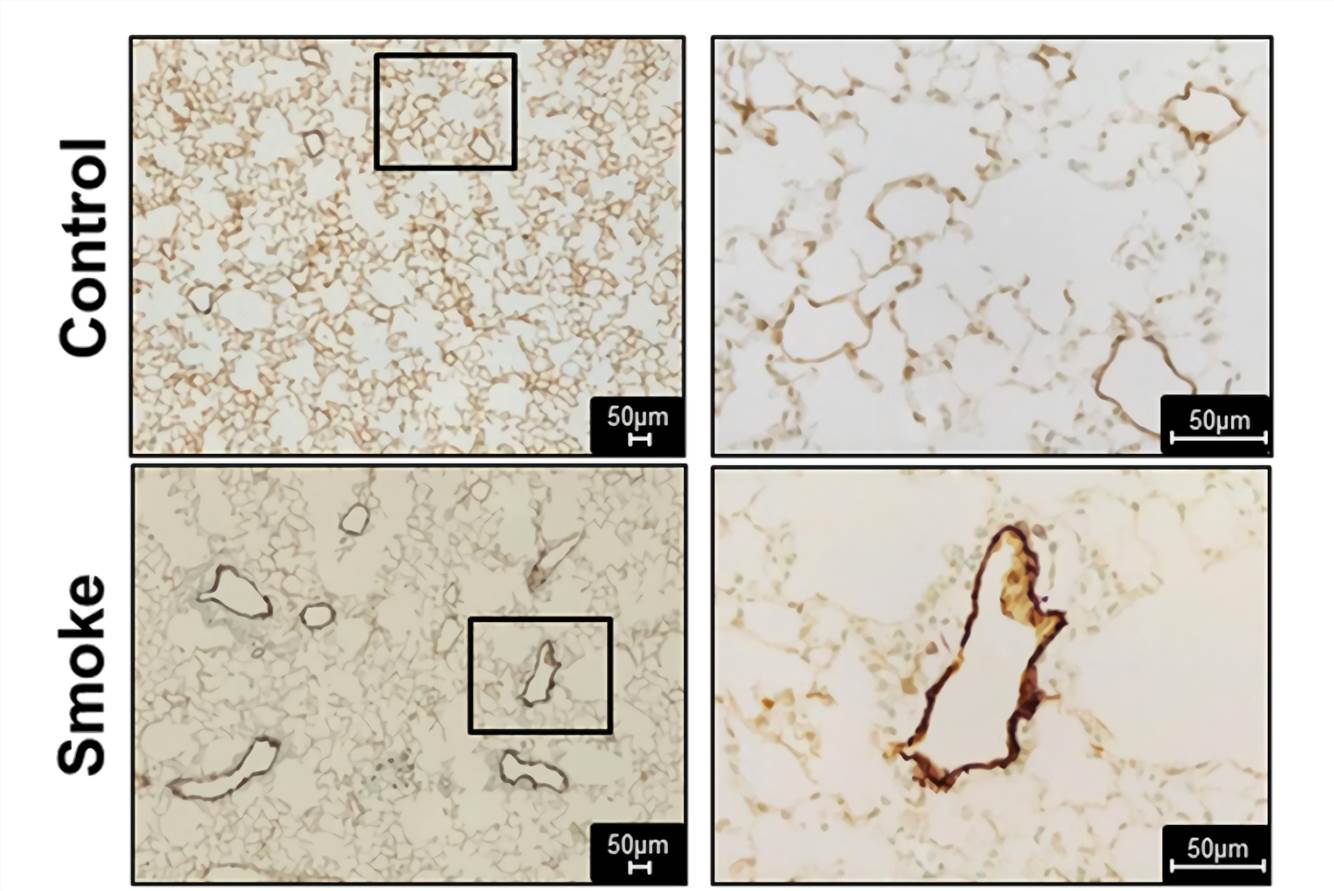Cigarette Smoke induced COPD Model
Creative Biolabs specializes in rodent preclinical screening, safety profiling, and efficacy studies of test articles. For mimicking the human chronic obstructive pulmonary disease, we offer a widely used rodent COPD model induced by long-term exposure to cigarette.
Introduction of Chronic Obstructive Pulmonary Disease (COPD)
COPD is a collective term for chronic bronchitis and emphysema and is one of the major causes of death worldwide. On the one hand, airway inflammation and remodeling represent characteristic features. On the other hand, there is destruction of the elastic architecture of the lung which leads to enlargement of distal airspaces, causing emphysema. Due to its complex nature, there is no single animal model that can completely recapitulate all the etiologies of human COPD.
Cigarette Smoke-Induced COPD Model
Containing a large number of toxic substances, cigarette smoke has been identified as the most important risk for the development of COPD in humans. As a sequence, the use of animal models induced by smoke exposure is a logical choice for investigation. To date, a number of small laboratory animals have been used for studies of cigarette smoke (CS)-induced COPD including mice, rats, and guinea pigs, among which mice and rats are the most widely used species. The degree of abnormalities progresses with increasing length of smoke exposure. At Creative Biolabs, our capabilities include the construction of both acute and chronic CS-induced COPD models.
 Fig.1 Cigarette smoke-induced pulmonary vascular
remodeling in mice-histology. (Seimetz et al. 2015)1, 2
Fig.1 Cigarette smoke-induced pulmonary vascular
remodeling in mice-histology. (Seimetz et al. 2015)1, 2
Induction of CS-induced COPD model
Acute and chronic exposures of animals to cigarette smoke lead to lung responses that in part mimic the lung inflammatory and structural changes observed in human COPD. Usually, a smoking apparatus is applied, through which the smoke concentration in the exposure chamber can be kept almost constant during exposure.
- In the acute study, the mice are exposed to the smoke of cigarettes for just minutes or hours which will result in a transient inflammatory response. In this model, a significant increase in BALF neutrophil and macrophage counts can be observed in 24h.
- In the chronic study, the mice are exposed to the smoke for months. In this model, the long duration of cigarette exposure is enough to mimic patients with a long cigarette smoking history. As a result, this model represents an adequate animal model to mimic the chronic features of pulmonary damages in human COPD. However, it also means that resources and patience are required to carry out the very long exposures.
Assessments
In testing the therapeutic efficacy of drug candidates, we are capable of conducting all kinds of assessments as well as providing assistance in data interpretation. Our battery of assessments including but not limited to:
- Body weight changes
- Lung function determination
- Bronchoalveolar lavage fluid (BALF) analysis
- Lung histology examination
- Measurements of inflammatory chemokines and cytokines
- Immunohistochemistry
Additionally, Creative Biolabs has both state-of-the-art facilities and professional technical teams that enhance our ability to develop a wide range of disease models. Other examples of rodent respiratory disease models that you may be interested include:
- Ovalbumin-Induced Asthma Model
- House Dust Mite (HDM)-Induced Allergic Asthma Model
- LPS-induced Pulmonary Neutrophilia Model
- Bleomycin-Induced Lung Fibrosis
Moreover, our scientists are experienced with rapidly validating models from the literature and we offer turn-key or ala carte services customized to our client's needs. Please contact us to discuss your requirements if you are interested in any of our services.
References
- Seimetz, M.; et al. Cigarette Smoke-Induced Emphysema and Pulmonary Hypertension Can Be Prevented by Phosphodiesterase 4 and 5 Inhibition in Mice. Plos One. 2015, 10(6):e0129327.
- under Open Access license CC BY 4.0, without modification.
For Research Use Only.
